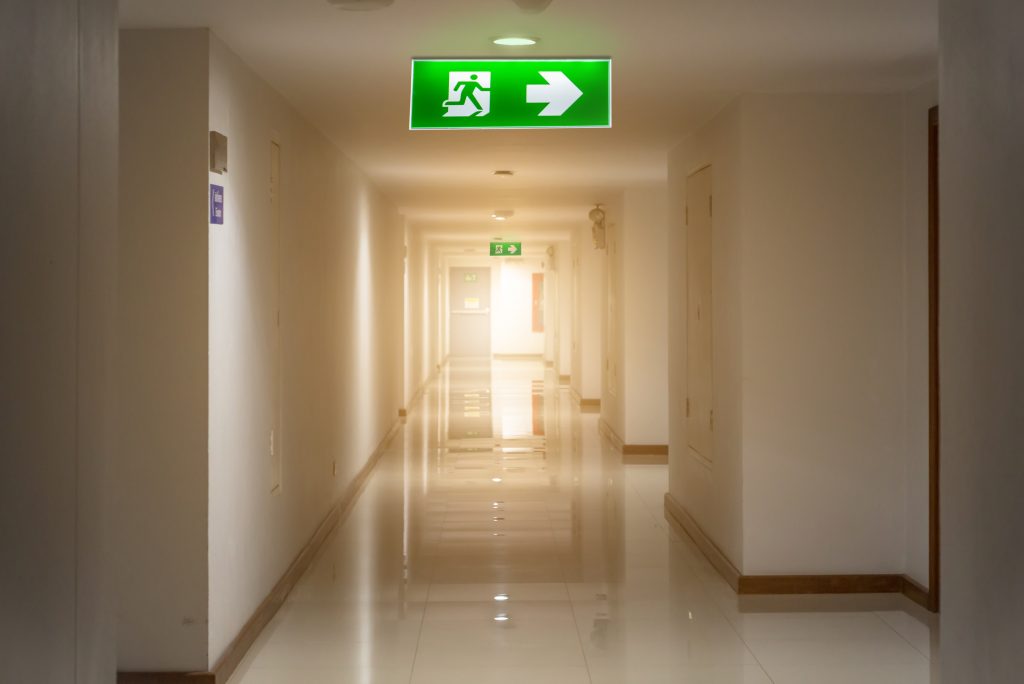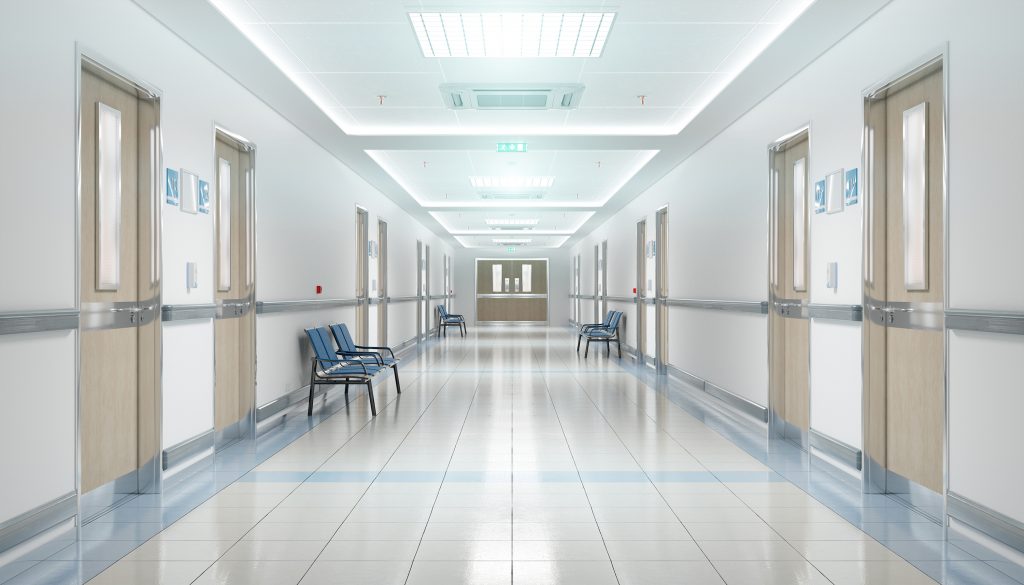
To protect the people using your property, having the right specification of escape route lighting is critical – it could mean the difference between life or death. In this blog, we explore emergency lighting systems in detail and look at what the law says on their installation.
Emergency lighting is designed to work in the event of a power failure, or reduced visibility, to help building occupants find their way out quickly and safely.
There are three types of emergency escape lighting:
EMCAL-Systems specialises in the specification, installation and maintenance of emergency escape lighting. Our process starts with gaining a deeper understanding of the building – it’s scale and complexity, what it’s used for, and its occupants.
This determines the type and specification of the lighting system required.

Escape routes and exits must be lit to a minimum of one lux (unit of illuminance) in an emergency. The Regulatory Reform (Fire Safety) Order 2005, states that:
‘emergency routes and exits requiring illumination must be provided with emergency lighting of adequate intensity in the case of failure of normal lighting.’
This relates to non-domestic buildings and multiple occupancy buildings, including houses in multi-occupation (HMO) i.e. one property with several tenants.
There is also a series of British Standards that outlines the minimum requirements for escape route lighting. The ‘code of practice for emergency lighting of premises’ (BS5266-1) is the main document, which covers general guidance and rules.

When we’re designing an emergency lighting system, we work with our clients to decide where escape lighting should be installed and what specification of lighting is needed.
To describe escape route lighting, we usually talk about type, mode of operation, facilities, and duration – and there is a minimum standard for each one.
Emergency lighting products can either be:
As the name suggests, self-contained lights have their own back-up battery. Whereas those connected to the mains power, share their battery with other lights in the system.
There are two modes of operation – maintained and non-maintained.
Maintained luminaries are used as normal lighting day-to-day, and in the event of a power failure they switch over to a back-up battery. This type of system is used in places such as theatres, night clubs, cinemas, and halls. In these buildings, dimmed lighting is used when it is occupied therefore escape routes still need to be visible.
Non-maintained luminaries remain ‘off’ until they are needed, at which point they are automatically activated. The exception to this is fire exit signs which are usually illuminated even under well-lit conditions so a safe, escape route is always visible.
Some lights contain a self-test module, so you don’t have to do it manually. Instead if there’s a problem, the system will present a visual or audible alarm to let you know. Most other lights have a remote test device, so you can check whether it’s working from a centralised panel. Testing is a complex area, and we’ll come back to this later.
As a minimum, emergency lighting should stay on for one hour, but depending on the type of building and what it’s used for, it may need to be longer (up to three hours).
Buildings that have a one-hour emergency lighting requirement, include:
Three-hour emergency lighting is required where it’s not possible to evacuate a building quickly or it’s likely to be reoccupied before the power is restored. This includes:
The British Standard for emergency lighting (BS5266) includes detailed guidance on the minimum duration required for different types of properties.
Emergency lighting systems should be serviced regularly to keep the system in good working order.
Testing is also critical, because by their very nature, emergency systems are rarely used and when they are needed, it’s already too late to resolve any problems. To test the system fully you must simulate a mains failure, thereby activating the back-up battery that powers the lights.
Every month, a short, functional test should be carried out on all the lights to check that they are present, clean, and working – and any remedial work carried out swiftly.
The annual test is designed to be more comprehensive and should test the lights for the full duration specified, i.e. 60 or 180 minutes. So, if they are supposed to be able to stay on for three hours, then you should check that they stay operational for this long.
Clearly running down the back-up batteries in your emergency lighting system puts you at risk while it recharges, but a professional business that is experienced in undertaking this type of testing can help you put the right precautions in place.
We have over 35 years of experience helping businesses – big and small – with the design and installation of their emergency lighting systems. We’ve worked with airports (Birmingham and Gatwick), Morrisons, Cineworld, and Sheffield Hallam University.
Our portfolio of work, stretches across the country, but we’re never happier than on our home turf in South Yorkshire. Whatever the size, type, or location of your business, if you need help with your emergency lighting system, call the experts.